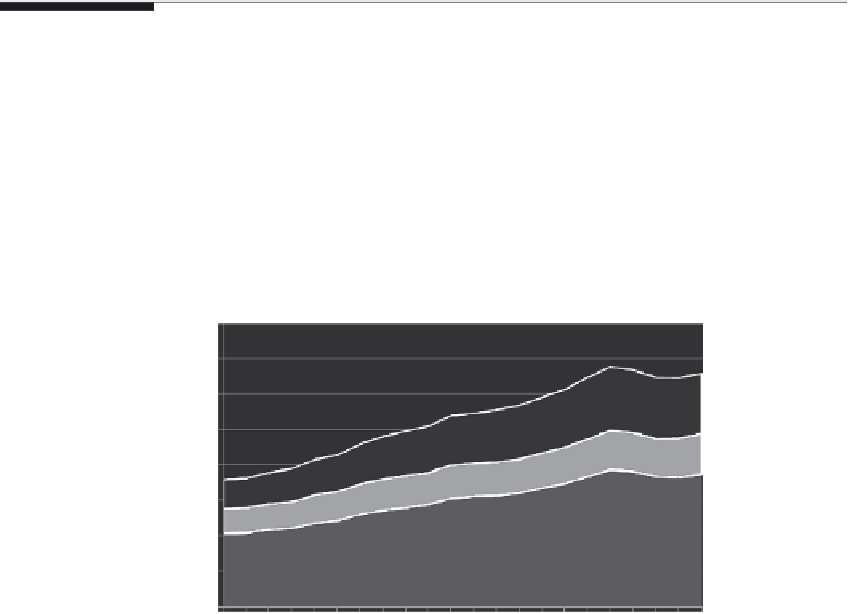Environmental Engineering Reference
In-Depth Information
support to effectively design and execute clean energy programs in an environment of
changing conditions.*
We begin with an overview of the energy system today. We then review the environmen-
tal and economic risks of the current system and describe how those risks can be managed
through sustainable energy alternatives. In the next section, we highlight the institutional
bases for a sustainable energy system. The prospects for establishing a sustainable power
system are assessed in the last section.
To start, a little electric jargon. Energy is measured in kilowatt hours (kWh). Because
huge amounts of energy are generated and sold, it is useful to measure energy in mega-
watt hours (MWh). 1 MWh equals 1000 kWh. 1000 MWh equals 1 gigawatt hour (GWh).
Power generating capacity and instantaneous power consumption are measured in kilo-
watts (kW). 1000 kW is 1 megawatt (MW) and 1000 MW equals 1 gigawatt (GW).
29.2 Energy System Today
The demand for electricity in the desert Southwest has grown rapidly (Figure 29.1).
†
Between 1990 and 2008 the average annual growth rate for electricity sales in Arizona,
Nevada, and New Mexico was about 3.5%, although after 2007 the recession reduced the
level of sales.
2
The intense desert heat shapes the demand for electricity. Peak demand is well above
demand at other hours because consumers maximize air conditioner use during the
hottest part of the day during the summer—in the late afternoon and early evening hours.
160,000
140,000
120,000
100,000
NV
80,000
NM
60,000
40,000
AZ
20,000
0
FIGURE 29.1
Retail electrical sales: AZ, NM, NV.
*
On the role of institutions, see North.
1
†
The study region does not correspond to political boundaries or electric supply regions. Consequently, to
make use of readily available data, we must sometimes present information for states. Because much of
California and Texas lie outside the desert Southwest, this chapter presents state level data only for Nevada,
Arizona, and New Mexico. However, policies for all five states are discussed.

Search WWH ::

Custom Search